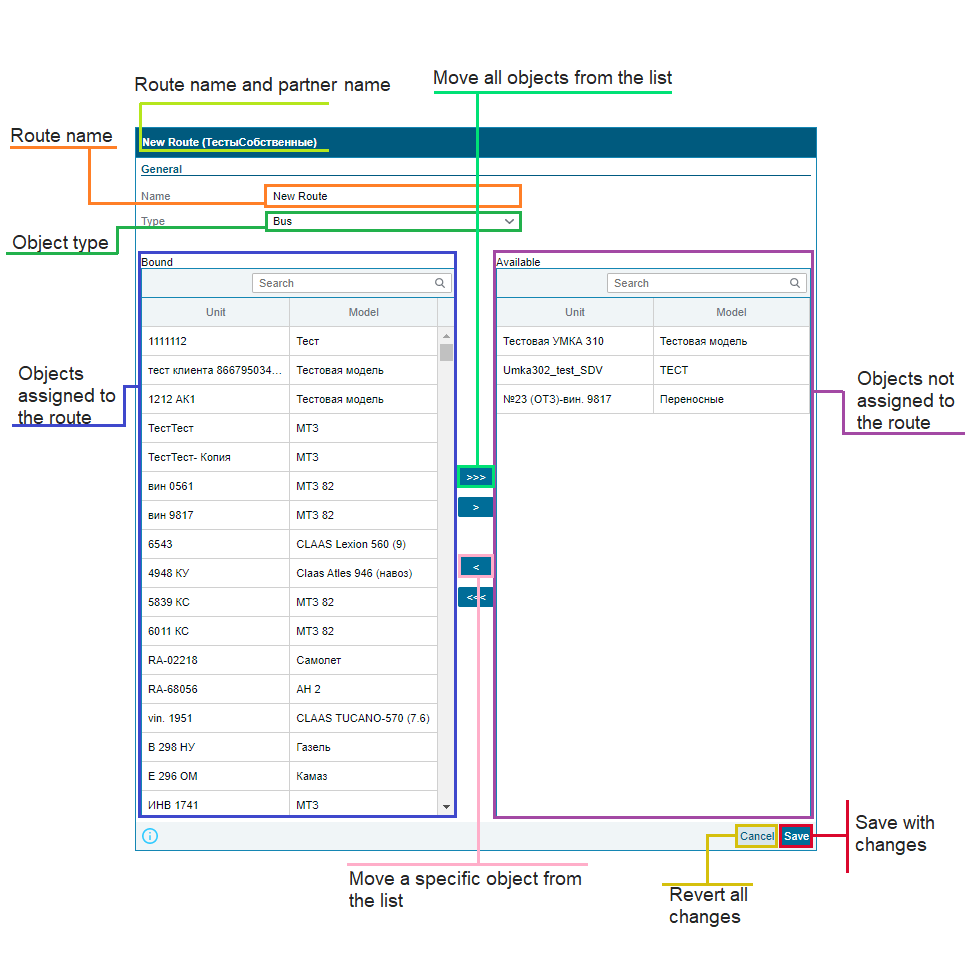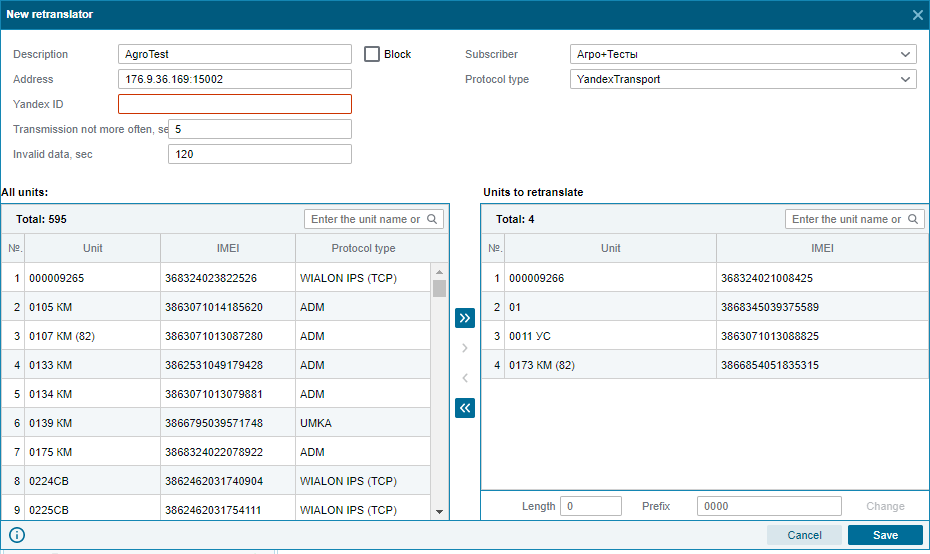Routes
Last modified by Андрей Калиновский on 2023/04/26 10:21
This module is used to create and designate routes in the system in order to send data to Yandex.Transport. This functionality is required for companies that carry passengers.
Creating routes.
To create routes, go to the appropriate section in the system.

This tab contains the following tools:
- adding a new route;
- editing already added;
- deleting the added route.
After pressing the buttons for adding or editing a route, the following window will open:

- Route Name and Partner Name - Before you give a route name, this line will say “New Route”. The partner's name is filled in automatically.
- Route name - In this line, you must enter the name of the route.
- Object type - you must specify the type that the object must be for Yandex.Transport. These types are: Bus, Trolleybus, Tram, Fixed-route taxi.
- Linked objects are vehicles that are assigned to the route
- Free objects are vehicles that are not assigned to the route
Route integration
The integration goes like this:
- The client contacts the Yandex manager, informs which city he wants to connect and signs an agreement on information cooperation (free of charge).
- Yandex provides the client with the TOR, where the url of the production server is specified, and assigns a client ID (client ID) to the client.
- The client contacts those GLONASSSoft support, saying that he would like to connect to the Yandex.Transport system. The client receives the “Public transport” role, creates routes in the GLONASSsoft monitoring system consisting of the name of the route, the type of vehicle and their list (Yandex itself receives the geometry of the route and stops from the city administration, so it is important that their names in the system correspond to city ones).
- The client sets up relaying from GLONASSSoft to Yandex.Maps using the YandexTransport ID and protocol, and selecting relayed objects.
- The client sends data about the configured routes to the Yandex manager, who enters them into Yandex.Maps.
- After placing in Yandex.Maps, statistics are collected for at least 2 weeks, after which the routes appear in the Yandex.Maps application.
- The client can reassign individual cars between established routes, without contacting those. support or Yandex.

The grounds for refusal of cooperation by Yandex may be poor quality or incomplete volume of transmitted data.
Read more about relaying in the article “ Relaying ”.